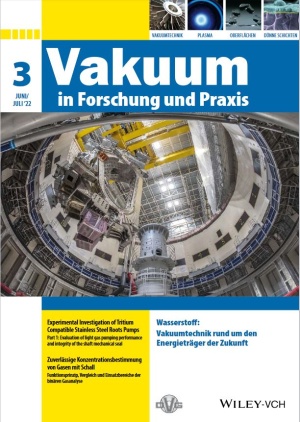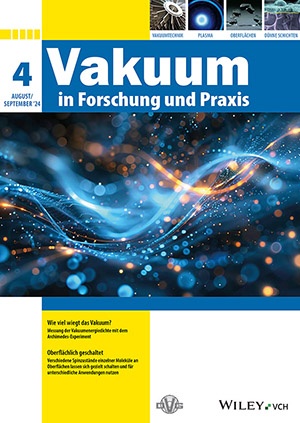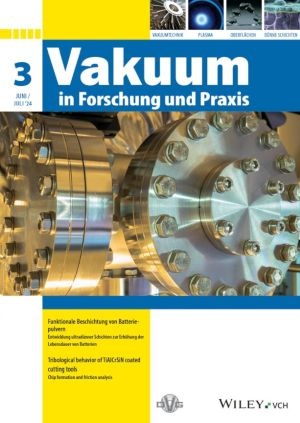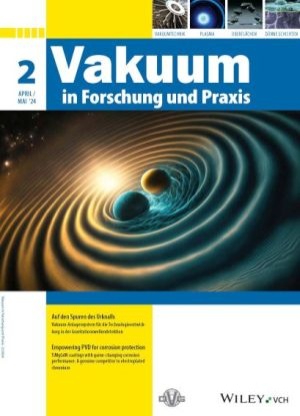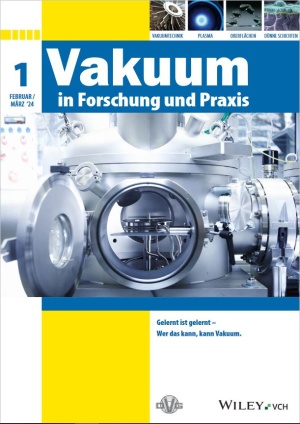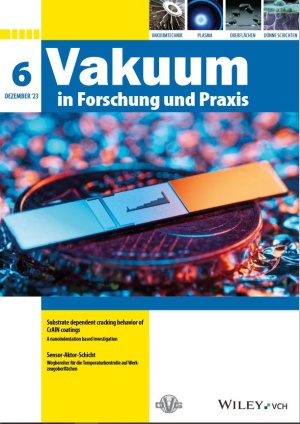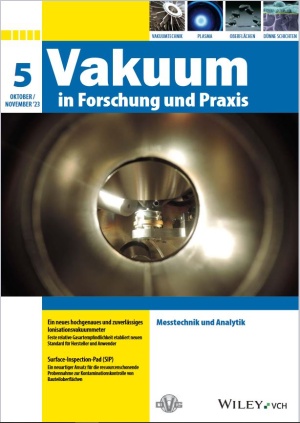Editorial
Free Access
Lisa Kleinen
Magazin
Vakuum
Indranil Banerjee, Andreas Schopphoff, Shaun Hughes, Robert Pearce, Sergei Nasluzov
The tritium compatible Roots pump Okta 1500 (Pfeiffer Vacuum) is designed for pumping light gas species consisting of diluted radioactive gas, especially tritium mixed with other hydrogen isotopes and helium. Therefore, the pump is constructed of stainless steel and equipped with a special gas lubricated mechanical seal.
The series of experiments presented in this work include the evaluation of the performance and an integrity check of the glide ring seal as well as the determination of the light gas pumping performance at low pressure. Those qualifications are needed for efficient embedding of the pump in the International Thermonuclear Experimental Fusion Reactor (ITER) project. As a nuclear facility (Installation Nucléaire de Base, INB) ITER is operated in accordance with the French nuclear safety regulations (INB guidelines) that demand qualification and integrity of the tritium bearing equipment to maintain performance and confinement of active gases at every stages via design, testing, commissioning, operation and surveillance. The experimental methodologies and findings are important to advocate the qualification of the pump for the purpose of radioactive light gas pumping as a roughing pump to back Torus high vacuum cryogenic pump.
Maximilian Dreher
In diesem Artikel werden mehrere Prinzipien zur Analyse von Gasen betrachtet. Dabei handelt es sich sowohl um universelle, als auch binäre Ansätze. Besonderes Augenmerk wird dabei auf die binäre Gasanalyse auf Basis der Schallgeschwindigkeitsmessung mit dem SRS BGA244 gelegt, dessen Funktionsprinzip ebenfalls erläutert wird. Die Fähigkeiten und Vorteile dieses Messprinzips werden anhand von Beispielen in Zusammenhang mit Wasserstoff als Kühlmittel von Elektrizitätsgeneratoren sowie in der Dotierung bei der Halbleiterherstellung aufgezeigt. Messergebnisse bestätigen die Zuverlässigkeit und Genauigkeit des binären Gasanalysesystems.
Aleksey Burmistrov, Alexey Raykov, Aleksandr Isaev, Sergey Salikeev, E. Kapustin, Marina Fomina
In this paper influence of rotor profile type of Roots vacuum pumps on backward leakage through channels of rotor mechanism and pumping speed is considered.
Elliptical, involute, and circular profiles are widely used. Backward leakage through channels of rotor mechanism with different rotor profiles is determined from conductance which was calculated by angular coefficients method for free molecular flow regime at different rotors rotating angles. It is shown that backward leakage is maximal at rotors rotating angles 25–45° due to maximal inter-rotor channel opening for gas flow and is minimal at 0°. Elliptical rotor profile provides minimal backward leakage over one revolution.
Numerical modeling of Roots pump working process was carried out on the basis of CFD ANSYS-CFX complex by dynamic meshing method. SST turbulence model was used for calculations. It is confirmed that maximal pumping speed is provided by Roots pump with elliptical rotor profile.
Dünne Schichten
Yousef Leghapour Lighvan
Nowadays, there is a great interest in designing and fabricating thin films with unique morphologies to improve the surface properties for various applications. In this regard, atomic force microscopy (AFM) is widely used to investigate the surface morphology of thin films. The high spatial and vertical resolution makes AFM capable of extracting surface micro-roughness information precisely. In this study, films were deposited on different substrates using the RF-PECVD method. The morphological properties were studied by AFM analysis according to ISO 25178-2: 2012.The results of analyzing the AFM data demonstrate that a copper substrate is a good option for the fabricated silver film in this study, and it is a relatively ideal surface in terms of fractality.
Anwenderbericht
Magazin


